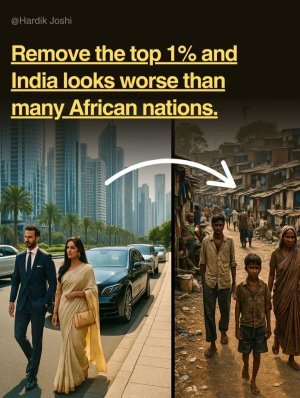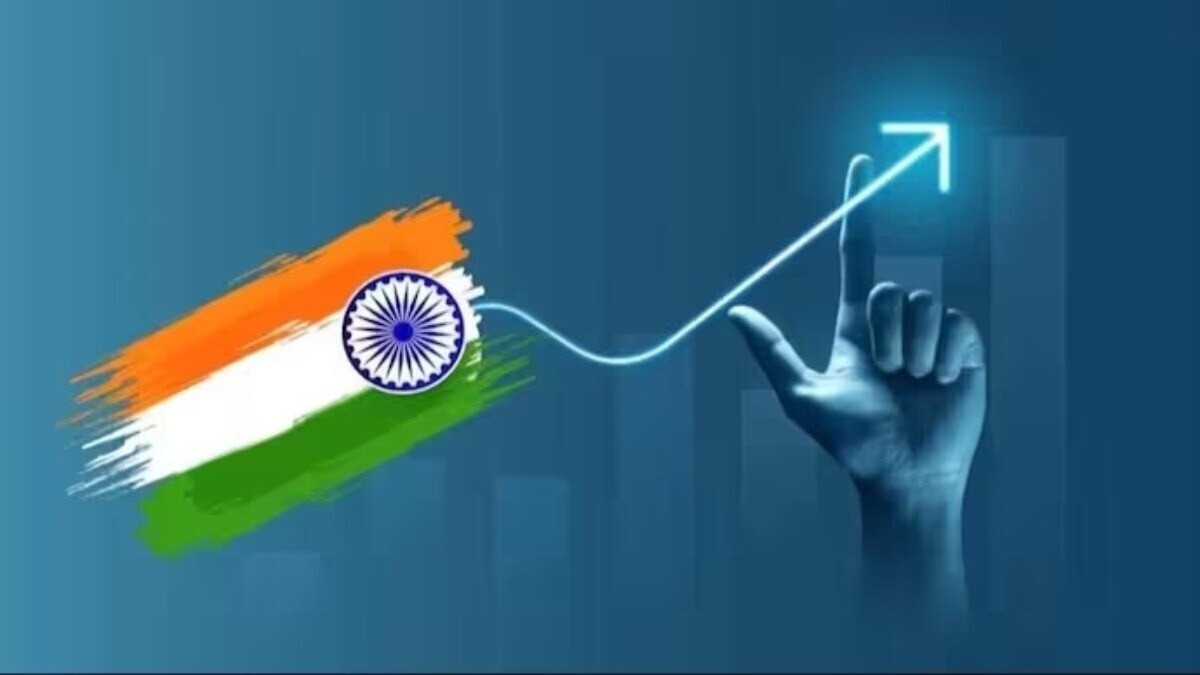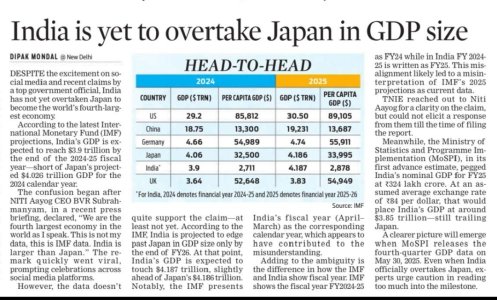- Joined
- Nov 25, 2023
- Runs
- 22,792
The ugly face of 4 Trillion economy 



===
India is now the world’s fourth-largest economy. But more than half the population still can’t afford three meals a day — a gap laid bare by its 105th rank on the Global Hunger Index 2024.
Analyst Hardik Joshi highlighted the disconnect in a recent LinkedIn post. Quoting a commenter who wrote, “If we remove the top 1% of rich people in India, we won’t even be comparable to African nations,” Joshi noted that while the line sounded harsh, the data supports it.

Sanjeev Sanyal: 'India's per capita income is around $3,000. To have higher income, you need a larger GDP'
'One Big Beautiful Bill': What it means for India and Indians living in the US
India ranks behind Nigeria (100), Kenya (89), and Ghana (78) on the hunger index, despite having a far larger GDP.
Joshi pointed to this as a “mirror,” not an exaggeration.
The figures reinforce the concern. India’s per capita income is around $3,000, but it masks deep inequality. The top 1% of the population controls over 40% of national wealth, while the bottom 50% holds just 3%. Roughly 700 million people live with varying degrees of food insecurity.
“We’ve mastered wealth creation,” Joshi wrote, “now we must figure out distribution.”
Economic growth has lifted national income averages, but those gains have not translated evenly. India’s multidimensional poverty rate remains high at 16.4%. Roughly 90% of the workforce operates in the informal sector, where wages are low and benefits limited.
Advertisement
Urban prosperity inflates national metrics, but rural areas — especially those reliant on agriculture — continue to lag. Joshi’s post points out that India’s growth narrative doesn’t always reflect who is benefitting.
“GDP means little if it hides empty plates,” he wrote, framing the issue not as a critique of growth, but as a question of reach

 www.businesstoday.in
www.businesstoday.in
===
India is now the world’s fourth-largest economy. But more than half the population still can’t afford three meals a day — a gap laid bare by its 105th rank on the Global Hunger Index 2024.
Analyst Hardik Joshi highlighted the disconnect in a recent LinkedIn post. Quoting a commenter who wrote, “If we remove the top 1% of rich people in India, we won’t even be comparable to African nations,” Joshi noted that while the line sounded harsh, the data supports it.

Sanjeev Sanyal: 'India's per capita income is around $3,000. To have higher income, you need a larger GDP'
'One Big Beautiful Bill': What it means for India and Indians living in the US
India ranks behind Nigeria (100), Kenya (89), and Ghana (78) on the hunger index, despite having a far larger GDP.
Joshi pointed to this as a “mirror,” not an exaggeration.
The figures reinforce the concern. India’s per capita income is around $3,000, but it masks deep inequality. The top 1% of the population controls over 40% of national wealth, while the bottom 50% holds just 3%. Roughly 700 million people live with varying degrees of food insecurity.
“We’ve mastered wealth creation,” Joshi wrote, “now we must figure out distribution.”
Economic growth has lifted national income averages, but those gains have not translated evenly. India’s multidimensional poverty rate remains high at 16.4%. Roughly 90% of the workforce operates in the informal sector, where wages are low and benefits limited.
Advertisement
Urban prosperity inflates national metrics, but rural areas — especially those reliant on agriculture — continue to lag. Joshi’s post points out that India’s growth narrative doesn’t always reflect who is benefitting.
“GDP means little if it hides empty plates,” he wrote, framing the issue not as a critique of growth, but as a question of reach

'If we remove the top 1% of rich people in India': Analyst flags a growth disconnect - BusinessToday
India ranks behind Nigeria (100), Kenya (89), and Ghana (78) on the hunger index, despite having a far larger GDP.

















